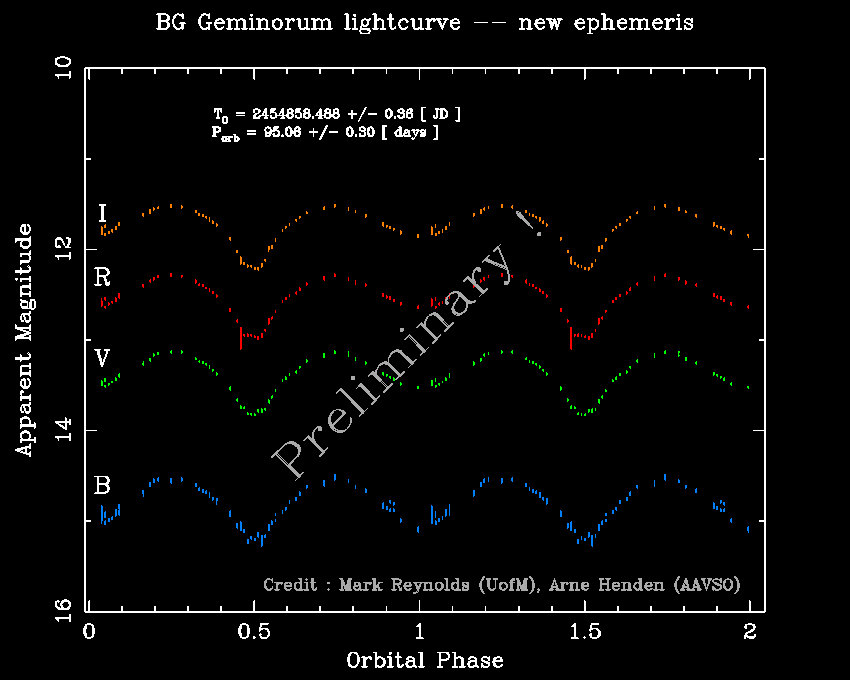BG Geminorum
Motivation
BG Geminorum is a long period eclipsing binary system (Porb ∼ 95 days); currently the nature of the primary is uncertain. Recent observational evidence indicate that the primary star is a black hole. If so, BG Geminorum would be the black hole binary system with the largest orbital period, by an factor of 3, as well as being the only known eclipsing black hole binary system in the Galaxy.
Based on the mass function, mass ratio (q = M2 /M1 ) and the inclination angle, in combination with the observed maximum emission line velocities in the UV & optical spectra, the primary star in BG Gem is either (i) B-type star (ii) a stellar mass back hole.
The ephemeris for BG Gem is currently poorly constrained. The current error on the time of eclipse large, e.g. our NOT spectra do not display high velocity emission lines; however, due to the large uncertainties in the time of eclipse, it is possible that the black hole was in eclipse during these observations. Clearly, this is an unsatisfactory situation.
Throughout the summer of 2009 we carried out optical monitoring
observations of BG Gem throughout its entire 90 day orbit to accurately
constrain the orbital ephemeris. These observations were taken at the MDM
observatory on Kitt Peak Arizona and in collaboration with
the AAVSO (AAVSO Special Notice #146).
Click here to learn more about
the eclipsing HMXB BG Geminorum.
2009 Results: Updated orbital ephemeris
We have calculated an updated orbital ephemeris for BG Gem based on the data from earlier this year. Surprisingly, we find the orbital period to be almost 4 days longer than previously recorded (Benson et al., 2000). The lightcurve phased according to the updated ephemeris is plotted below, two orbital phases are plotted for clarity;

This lightcurve above was obtained at the AAVSO Sonita Research Observatory.
Porb = 95.06 ± 0.30 [ days ]
The new orbital ephemeris will allow us target our spectra at the correct orbital phases. We plan to obtain updated spectroscopy during the coming observing season. This page will be updated with results as they become available.
Find the old 2009 campaign page here.
Previous work
- Benson et al., 2000, ApJ, 119, 890
- An optical study of BG Geminorum: An ellipsoidal binary with an unseen primary star.
- Kenyon et al., 2002, AJ, 124, 1054
- The eclipsing binary BG Geminorum: Improved constraints on the orbit and the structure of the accretion disc.
- Elebert et al., 2007, IAUS, 238, 361
- Optical, UV and X-ray analysis of the black hole candidate BG Geminorum